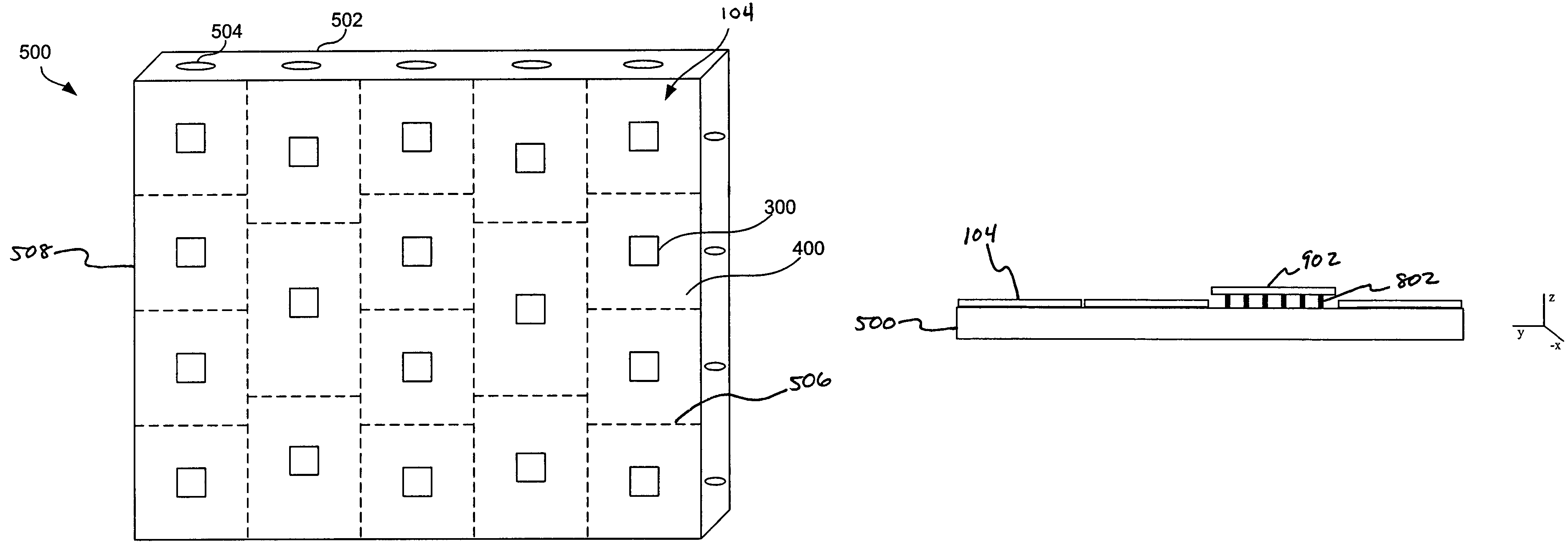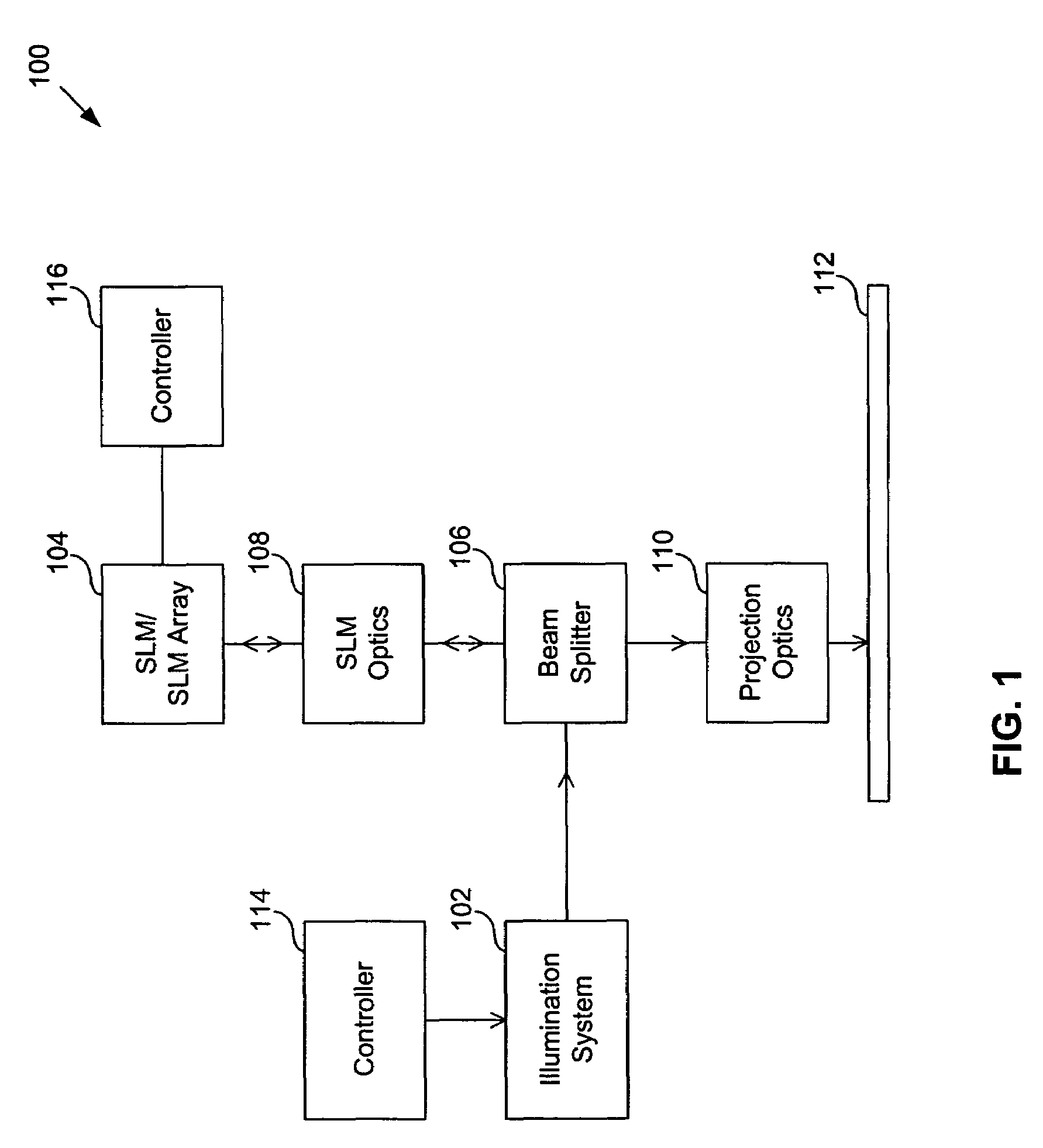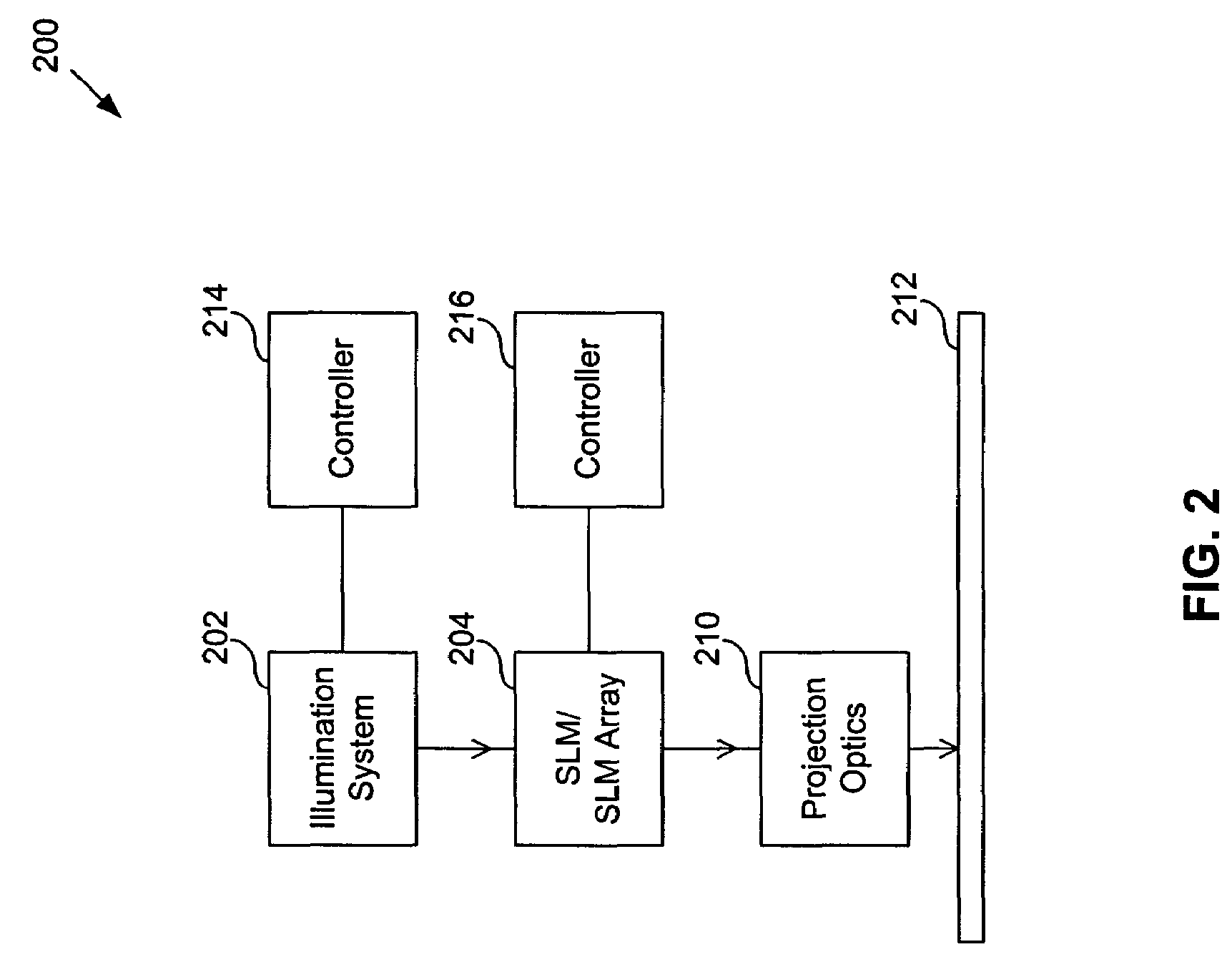Method and systems for total focus deviation adjustments on maskless lithography systems
a technology of maskless lithography and total focus deviation, applied in the field of lithography, can solve problems such as the deviation of the slm array from a flat plane, and achieve the effect of less stringent optics and reduced total focus deviation
- Summary
- Abstract
- Description
- Claims
- Application Information
AI Technical Summary
Benefits of technology
Problems solved by technology
Method used
Image
Examples
Embodiment Construction
Overview
[0033]While specific configurations and arrangements are discussed, it should be understood that this is done for illustrative purposes only. A person skilled in the pertinent art will recognize that other configurations and arrangements can be used without departing from the spirit and scope of the present invention. It will be apparent to a person skilled in the pertinent art that this invention can also be employed in a variety of other applications.
Maskless Lithography Systems
[0034]FIG. 1 shows a maskless lithography system 100 according to an embodiment of the present invention. System 100 includes an illumination system 102 that transmits light to a reflective spatial light modulator (SLM) 104 (e.g., a digital micromirror device (DMD), a reflective liquid crystal display (LCD), or the like) via a beam splitter 106 and SLM optics 108. SLM 104 is used to pattern the light in place of a reticle in traditional lithography systems. Patterned light reflected from SLM 104 is ...
PUM
| Property | Measurement | Unit |
|---|---|---|
| angle | aaaaa | aaaaa |
| optical aberration | aaaaa | aaaaa |
| conductive | aaaaa | aaaaa |
Abstract
Description
Claims
Application Information
 Login to View More
Login to View More - R&D
- Intellectual Property
- Life Sciences
- Materials
- Tech Scout
- Unparalleled Data Quality
- Higher Quality Content
- 60% Fewer Hallucinations
Browse by: Latest US Patents, China's latest patents, Technical Efficacy Thesaurus, Application Domain, Technology Topic, Popular Technical Reports.
© 2025 PatSnap. All rights reserved.Legal|Privacy policy|Modern Slavery Act Transparency Statement|Sitemap|About US| Contact US: help@patsnap.com



